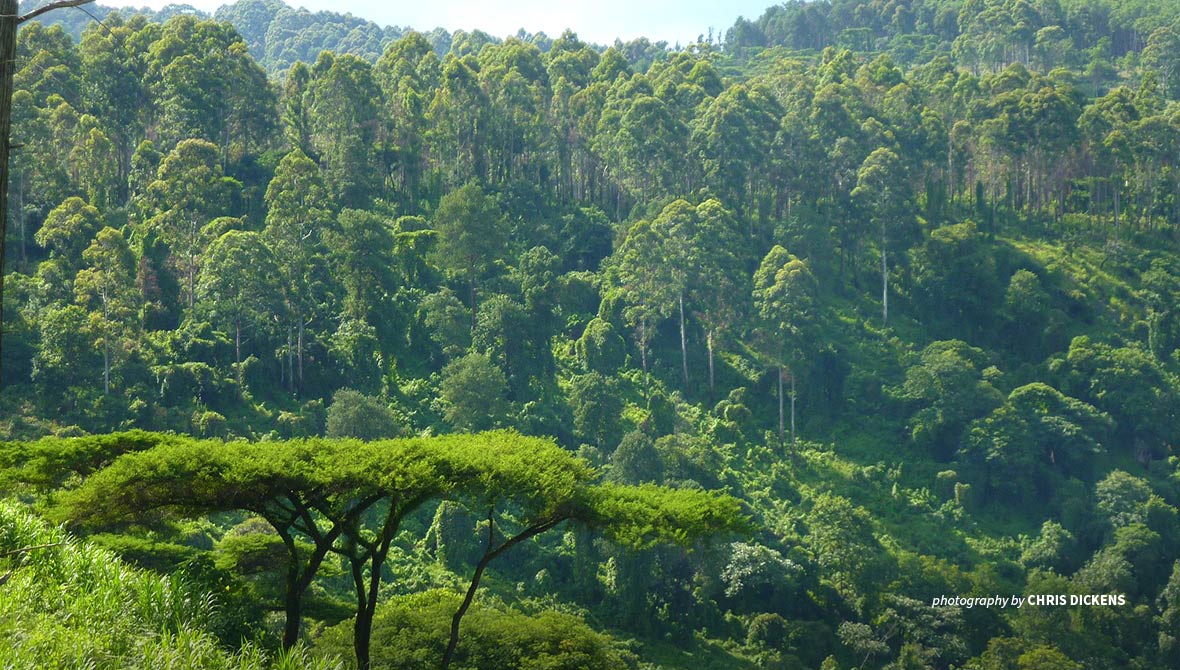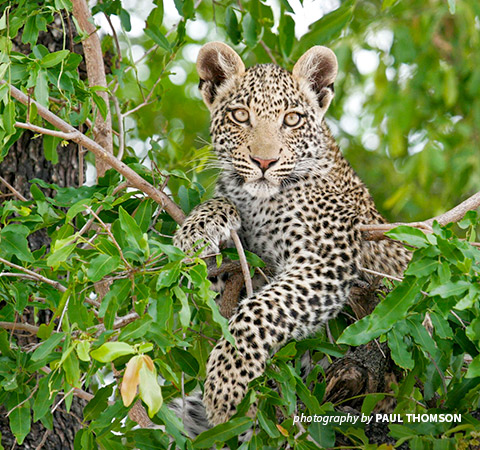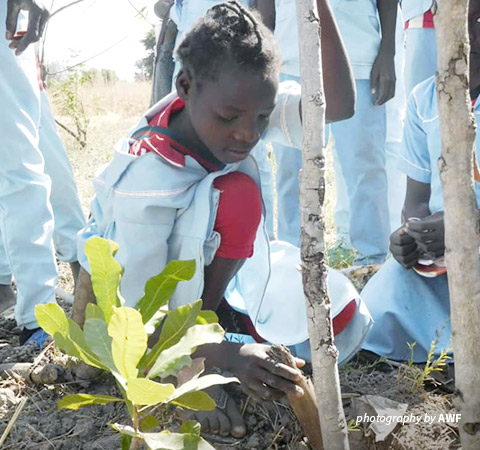Growing forests and communities

On International Day of Forests, we celebrate how trees cleverly communicate to sustain the ecosystems that support people and Africa's rich biodiversity
Underneath the soil and within the earth, the world is not quiet. Down below insects slither, small rodents and reptiles tunnel and call to one another, plant roots shuffle the soil as they stretch out — each casting an acoustic shadow. Some of the noises are byproducts of movement. But some of the underground signaling, noisy or noiseless, are important exchanges between these subterranean neighbors.
Trees are one of these signalers. Underground, trees communicate with one another via a network of fungi interlaced with tree roots — a system known as mycorrhizal networks. Trees of the same species, and sometimes other species, will cooperate. Sharing nutrients, water, and information, they form an interdependent bond with the others. The information shared via chemical, hormonal, and electrical signals concerns environmental factors: droughts, disease, insects — the need-to-knows of the tree world.
It might not be a consortium in the typical sense, but there is good reason for trees to take part in the conversation. A stable, healthy forest is the best environment for trees. Sharing resources sets trees up for success and, critically, allows them to regulate the ecological conditions they rely on. It is this mysterious but beautiful collaboration down below that allows the forest atop to grow full, strong, and tall.
The company trees keep
The forest’s far more visible community is the one above the ground. Forests cover 31 percent of the Earth’s land surface, granting homes to countless wildlife. Across the world, they provide habitat for 68 percent of mammal species, 75 percent of bird species, and 80 percent of amphibian species.

Leopards are commonly found in trees
Africa hosts 17 percent of the world’s forests and 31 percent of the woodlands. Inside these diverse and varied forest landscapes are some of Africa’s most iconic and celebrated wildlife species: mountain gorillas, forest elephants, leopards, bonobos, chimpanzees, African grey parrots, okapis, and more.
Sharing this space in much of the world, are people who live alongside the wildlife and likewise depend on the resources of the forest. These communities look to the forest for food, medicine, and materials. Even for those who live hundreds of miles away, intact forests serve as water towers, the source of rivers and streams that support millions.
Regrowing Faro’s forests
Forests are one of earth’s vital organs. But they are increasingly under threat. Almost three million hectares of Africa’s forests are lost each year.
In the North Region of Cameroon, close to the Nigeria border, is the 330,000-hectare Faro National Park. The semi-arid landscape’s wildlife is diverse: giraffe, leopard, black-and-white colobus, defassa waterbuck, and forest buffalo have all been spotted roaming the forested lands. More than 900 hippopotamus populate the waterways, swimming alongside 70 or more species of fish. And the air is brightened by the 250 bird species flying through.
A Cameroon National Observatory on Climate Change report states that between 2000 and 2017, Cameroon lost over 1.5 million hectares of forest. Combined with issues of desertification, deforestation, climate change, and food insecurity, the region was endangered with potentially disastrous consequences.

Schoolchildren in the Faro landscape participate in tree planting days organized by AWF
African Wildlife Foundation has worked in the Faro landscape since 2017, facilitating land-use planning discussions with various local stakeholders, including communities from nearby villages. One of the solutions to emerge out of the first of many forums was tree-planting. Reforesting critical areas around the landscape with trees benefits both the community and the wildlife — for instance, boosting food security, calming the microclimate, supporting honey production, and restoring wildlife habitat.
Since 2019 about 8,000 saplings have been planted. The success rates of sapling survival are relative, explains Adamou Aboubakar, Faro Community Development Officer. But they have ranged from 40 to 45 percent in community areas to 80 to 100 percent in households.
The saplings are started off at the Rural Resource Center, a location established by AWF and the International Council for Research in Agroforestry in July 2021. The Rural Resource Center, which engages more than 30 community members, including women and youth, holds a tree nursery, gardens, and improved seedling production.
Until the next tree planting day scheduled for May, the young sprouts are growing at the center. Cashew, mango, moringa, African mahogany, papaya, and lemon saplings are tended to as they await their final planting.
“As our trees are young, we can't expect seeing wildlife in or under,” Adamou says. But, he continued, “Birds, yes! I have seen a bird nest in our planted mango tree.”
A bird’s nest in a mango tree may be small, but it is a promising indicator of the growing community of trees, wildlife, and people — working in concert for the benefit of all.